Nowruz is one of the oldest celebrations that remain to us from the ancient times in this land, which we currently celebrate in many regions of Iran and Farsi-speaking countries all around the world.
History and the Cultural Aspect of Nowruz (Celebration of the New Year) in Iran
The first day of Nowruz coincides with the Spring (Vernal) Equinox in the northern hemisphere, and the Autumnal Equinox of the southern hemisphere. This is the time of year when the sun crosses the celestial equator, and the length of the day and night become equal.
Based on historical manuscripts, celebrations of Nowruz outdate the Achaemenid Empire. Iranians celebrated the coming of the New Year with special customs and rituals in older times, some of which carry on ubiquitously and some have undergone changes.
Nowruz signifies the turn of the year in Iran and Afghanistan. In countries such as Tajikistan, Russia, Turkmenistan, India, Pakistan, Kyrgyzstan, Syria, Iraq, Georgia, the Republic of Azerbaijan, Albania, China, and Uzbekistan, Nowruz is a national holiday and many of the people spend the day in celebration.
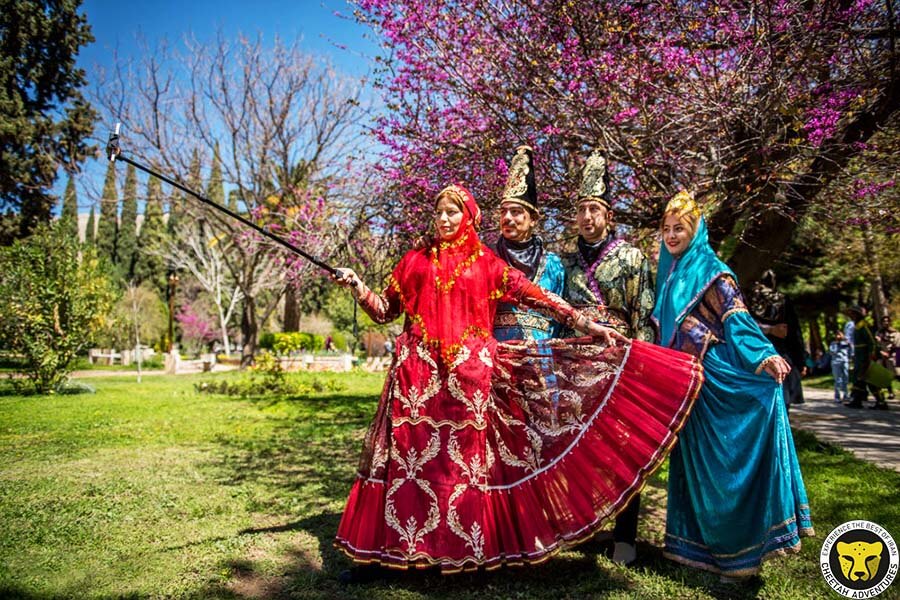
Qajar Dynasty Traditional Costume
What you will read in this article:
- Origin of Nowruz
- Celebration of Nowruz in Iran
- Traditions and Celebrations in Iran
- Nowruz Celebrations in Recent Times
- Nowruz in Iran in Recent Times
- A Few Additional Suggestions
Origin of Nowruz
Interestingly, no certain origin has been cited for this Iranian celebration of the New Year. The lore and myths say that on this day, approximately three thousand years ago, Jamshid, the legendary king of the Pishdadian Dynasty, left his castle located south of Urmia Lake in Azerbaijan province, and was met with the freshness of the plains and the radiant sun.
He decided that henceforth, they must call the day Nowruz. Since then, every year on this day, the people celebrate, rejoice, and organize festivals.
There are tales in Shahnameh, The Persian Book of Kings, of the festival of Nowruz as well.
Other sources indicate that Nowruz is Babylonian in origin. Based on these claims, after the conquests of Cyrus the Great, the Persians began to celebrate the traditions of Babylonia.
Others consider Zoroastrianism to be the origin of this ancient celebration.
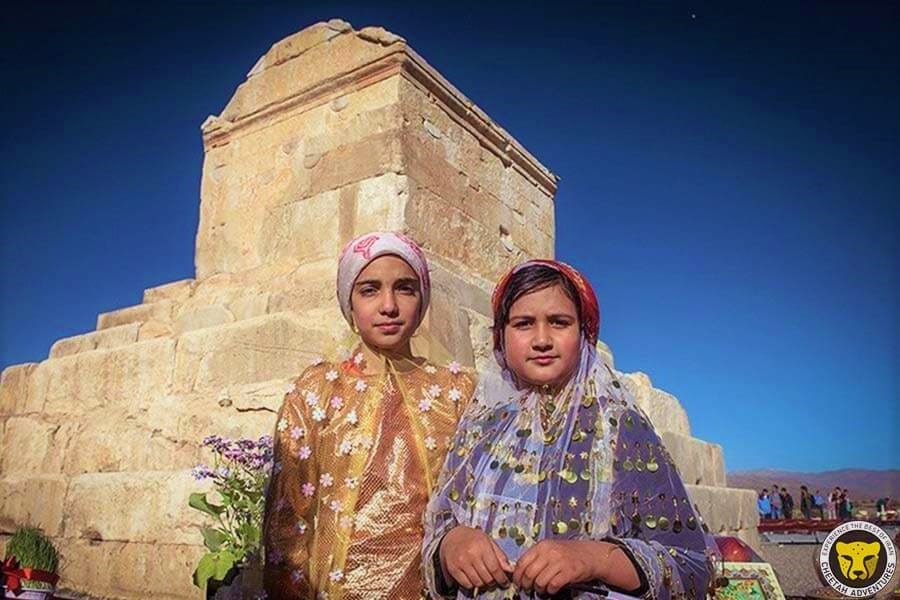
Pasargadae, The Tomb of Cyrus
The celebration of Nowruz would last at least 6 days. Nowruz celebrations are divided into two parts: Short and Long Nowruz. The first is also called Nowruz-e Aummeh.
During Nowruz-e Aummeh, celebrations would last for five days, from the first to the fifth day of Farvardin. The sixth day of Farvardin is also called Khordad-Ruz. This day would be celebrated as Long Nowruz or Nowruz-e Khawseh.
On each of those days that arrived, a group of people from each social class would go to the court of the king, and he would listen to their complaints and give orders to resolve their troubles.
On the sixth day, only the courtiers and attendants of the king would be allowed.
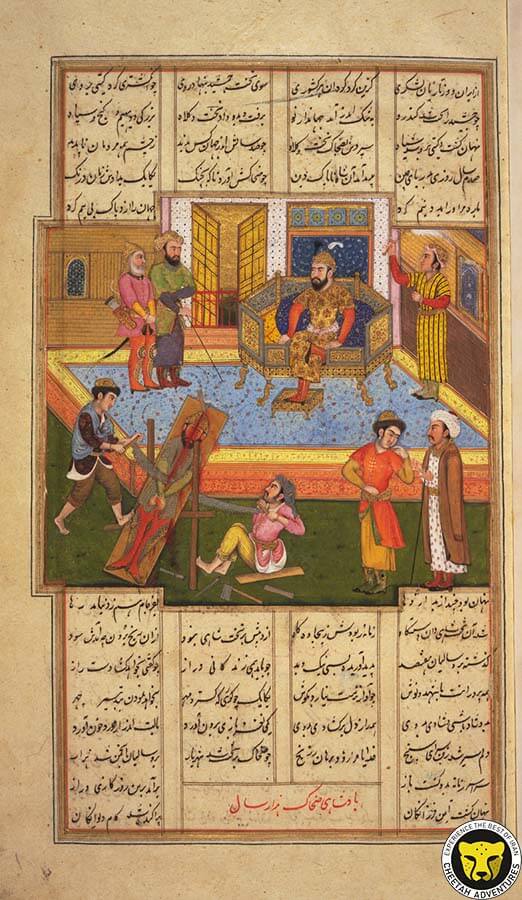
Page of an old Shahnameh
Celebration of Nowruz in Iran
If the turn of the year falls before noon, then that same day is Nowruz. If it falls on an afternoon, Nowruz falls on the following day. In the Gregorian calendar, Nowruz will coincide with the 21, 20, or rarely, the 22 of March.
Since Iran and Afghanistan use the solar calendar, Nowruz signifies the start of the New Year. However, in the countries of Central Asia and the Caucasus, since the common calendar is the Gregorian, they celebrate Nowruz as the beginning of spring, not the turn of the year.
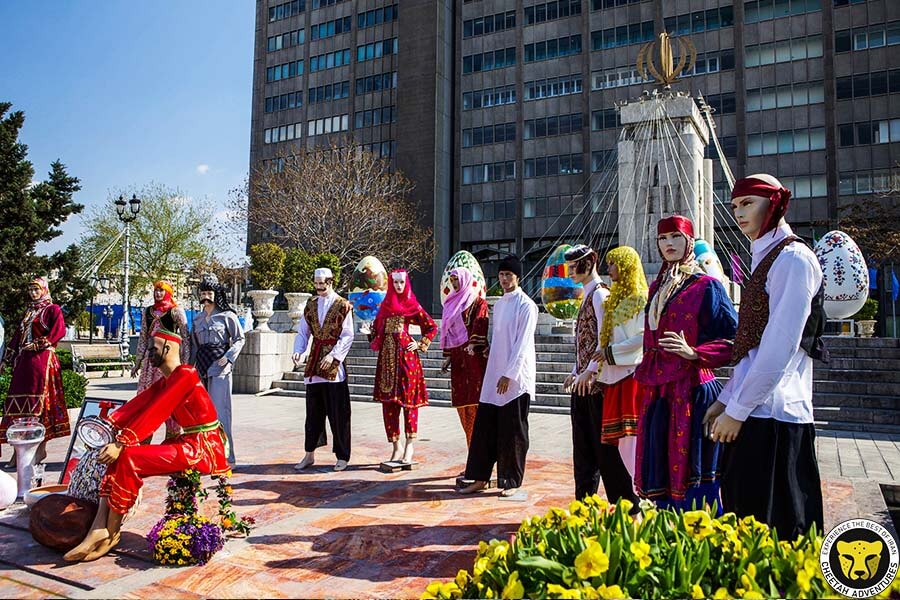
Nowruz In Iran, Tehran
Traditions and Celebrations in Iran
Chaharshanbe-Soori
The celebrations of Nowruz begin with The Festival of Fire, also known as Chaharshanbe-Soori. Then comes the last Thursday of the year, which people dedicate to visiting the graves of those they have lost. The third ritual, this one most commonly observed in Khorasan, is the Alfe.
The people observe this rite in mosques, graveyards, and tombs to commemorate their lost ones. They put sweets and traditional cakes such as Nan-e Shiri, Qottab, or Gomek on their table.
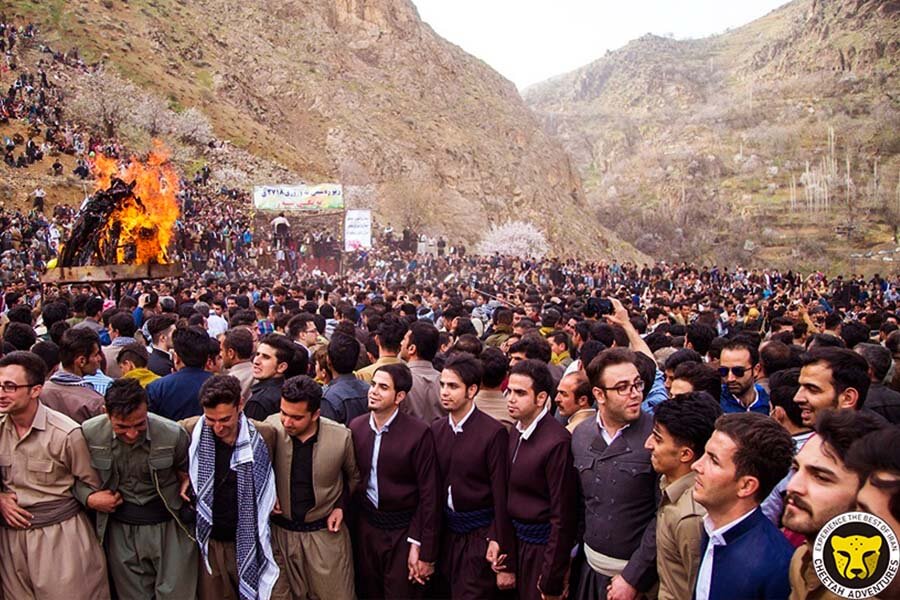
Nowruz in Iran, Kurdish People
Growing (Sabzeh) Sprouts
The people of Iran would sprout greens a few days before Eid came. The families would usually grow three plates of wheat, millet, and barley.
Spring-cleaning
According to this tradition, ancient Iranians would thoroughly clean their home in preparation for the spring. They would sometimes even repaint the walls; in the least, they would paint the room in which they would set their Haft Sin table.
The people of those days would dispose of the old furniture and replace them with new. It was traditional to break the clay water pitchers, in which they believed all the worries and misery of the year resided.
Rituals of the Return of Those Passed
Ancient Iranians believed that with the coming of Nowruz, the Faravahar (which is the root of the name Farvardin), meaning the ghost of those whom they had lost, would return to the earth. If they saw their family cheerful and the house to be clean, they would be happy and send prayers for their family members.
Therefore, a few days before Nowruz arrived, Persians would begin burning incense and Meshk-e Anbar.
Hajji Firuz
The arrival of Hajji Firuz, or Atash-Afruz (He who lights fires) with the celebrations of the new solar year, indicates how much of a diverse mix and assortment the celebration of Nowruz is. The arrival of Haji Firuz is a remnant of the celebratory rituals of Ancient Persia.
To observe this rite, men dressed in bright colors and with darkened faces would sing and play their instruments in bazaars. These young men sing a song in Farsi that brings the news that a New Year is coming. They would receive a small sum of money for being the bringer of such happy news.
In the villages and cities of Mazandaran and Ardabil, every year, since mid-Esfand, parades of Nowruzi-Khaan singers gather to celebrate in the streets.
This tradition is still ongoing in most cities and villages of Iran.
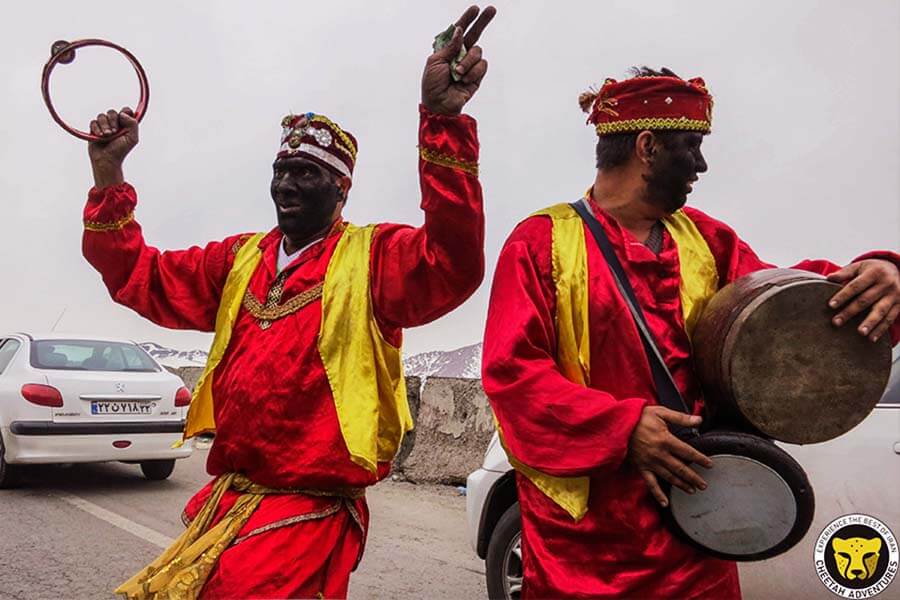
Hajji Firuz
Haft Sin
Setting a Haft Sin table is a typical tradition among all countries and peoples who celebrate Nowruz. We can categorize the components of a Haft Sin table as follows:
- Symbolic elements, such as apples, senjed, sumac, garlic, vinegar, and green sprouts (of wheat, et cetera which people planted a week prior to Nowruz), coins, Samanu, and hyacinths. These all begin with the letter sin (س) in Farsi, and since there are seven of them, the table setting is called Haft Sin, literally the seven S’s.
- Components for the reception and catering of guests, such as all types of sweets, candy, and trail mix.
Other constituents of a quintessential Haft Sin table include a Quran, a mirror, a bowl of water, and candles. Sometimes they might put a bowl of painted and decorated eggs, or goldfish.
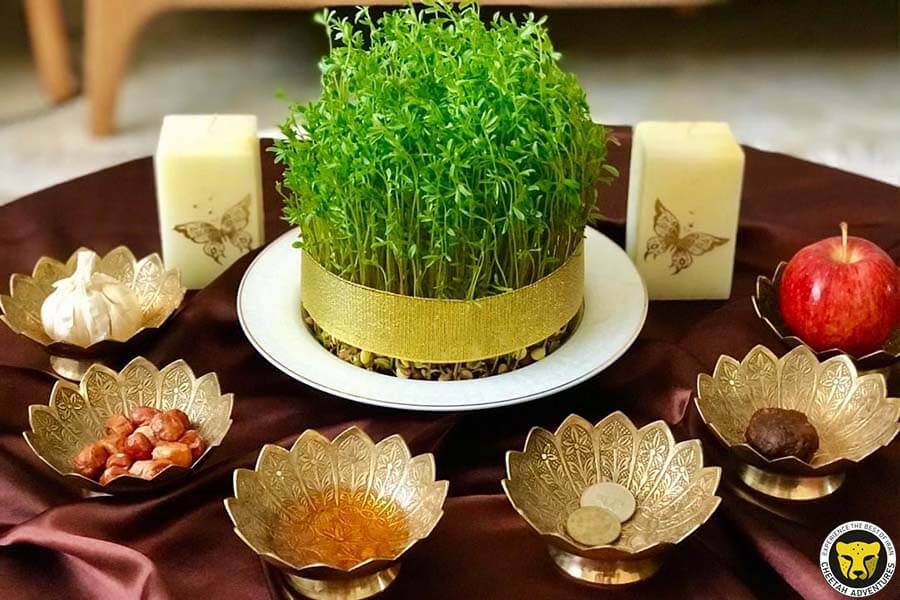
Iranian 7 Sin
In Kabul and northern cities of Afghanistan, it is customary to set a Haft Miveh (Seven fruits) table. The fruits that the people put on their Haft Miveh table include apricots, Senjed, pistachios, almonds, and green and red raisins.
Furthermore, tables of Haft Shin among the followers of Zarathustra, and Haft Mim in some regions of the province of Fars are customarily set.
Nowruz Sweets
In many regions of Iran, people would bake many types of sweets and slices of bread before the arrival of Eid. They would place these at their Haft Sin table to welcome guests.
The Day of Eid
Finally comes the day of Eid, the beginning of spring, and the turn of the year. On this day, all the members of the family would gather around and await the firing of the cannons, which would mark the beginning of the New Year.
After which the eldest of the family would take the money they had placed inside the Quran to gift to the members and wish them a happy New Year.
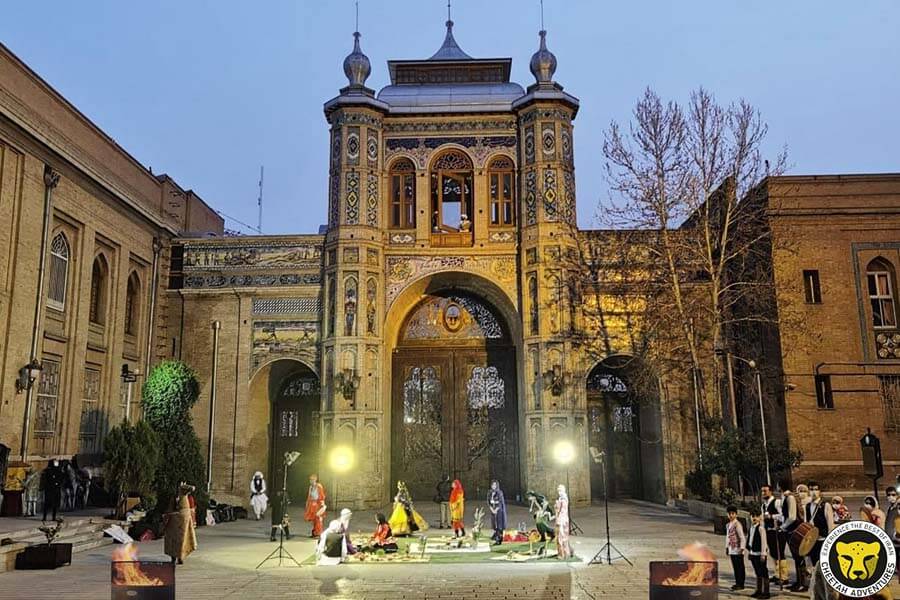
Nowruz in Iran, Tehran
The celebrations and rituals of the turn of the year vary in each country and depend wholly on the religion, culture, and race of the peoples of that land.
For Zarathustrians, this rite would be observed this way: after the turn of the year, the eldest of the family would get up and give each member of the family a spoonful of honey or sherbet, and three pieces of sweets, or three dried fruits, or three coins placed on a green leaf. As you can see, each culture celebrates differently.
Nowruz Celebration in Recent Times
Before, only the people of Iran and Afghanistan celebrated Nowruz. After the dissolution of the Soviet Union, countries such as Kyrgyzstan and Azerbaijan declared Nowruz as a national holiday. Soon some others followed suit.
During the rule of the Soviet Union, such celebrations were prohibited. Therefore the people had to observe such rites in secret.
On the other hand, some people found other solutions to persuade municipalities. For example in Tajikstan, the names Jashn-e Laleh, or the celebrations of March 8, were chosen so the people could celebrate without incurring the anger of authorities.
Furthermore, at the height of the power of the Taliban, since the lunar calendar was in place, Nowruz was banned and no one was allowed to celebrate it.
Turkey banned this celebration as well until the year 2000, even though Nowruz constitutes a rite very dear to the heart and identity of the Kurdish people.
Thankfully, in recent years, Nowruz has gained international recognition. In the year 2012, the United Nations General Assembly recognized March 21/ Farvardin 1 as Nowruz.
Nowadays more than 300 million people celebrate Nowruz globally.
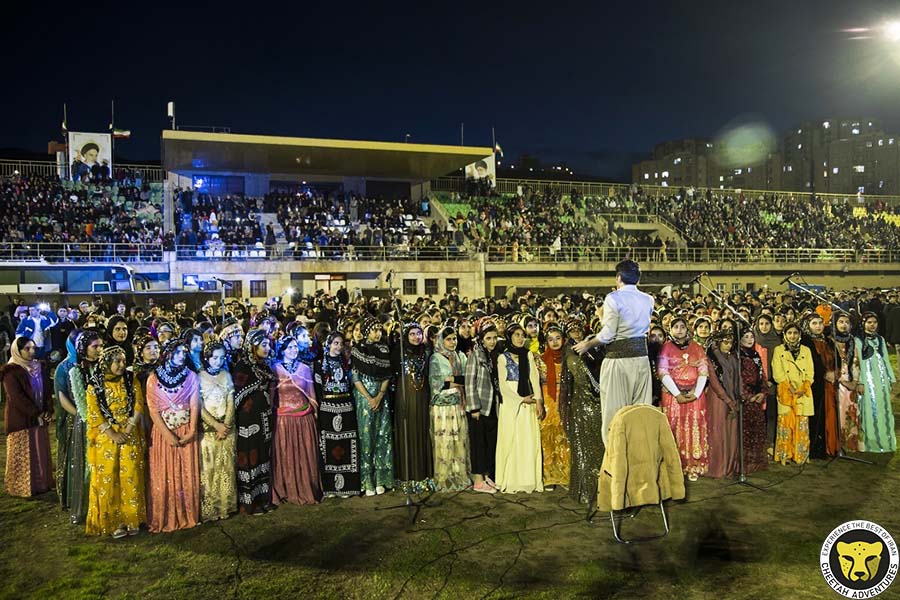
Nowruz in Iran, Sanandaj
Nowruz in Iran in the Recent Years
Many of the celebratory rites of the past are still observed albeit with certain alterations. If you travel to Iran during this event you will be thoroughly immersed in the atmosphere of preparations and celebrations.
For the entirety of the first week of the Farvardin holidays, all jobs and offices are closed. This is a very busy time for vacationing. Recreational sites and beaches will be filled with Iranian sightseers. Keep in mind that heavy traffic is expected on most intercity roads at the beginning or end of the day.
We recommend that in order to make the most of your time, and to enjoy your springtime in the best way, you plan your sightseeing and vacationing for the second week of Eid; only so that you do not encounter too heavy traffic or too crowded areas.
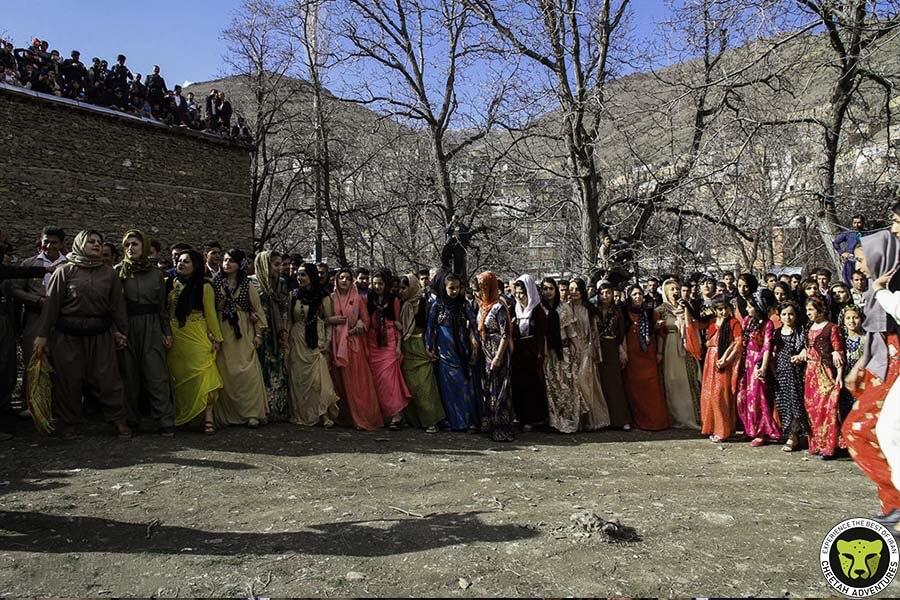
Nowruz in Iran
A Few Additional Suggestions:
Every one of Iran’s cities can make for a wonderful travel destination during Eid-e Nowruz celebrations. However, the following few are elected by Cheetah Adventures Tour Agency for Eid for the most fun and sensational adventures:
-
Tehran
Unlike other times of the year, Tehran is quite empty during Nowruz. Not at all like the teeming metropolis that it is for most of the year. Therefore, it is a wonderful opportunity to visit and enjoy the diverting and interesting tourist sites that it possesses.
Only make sure to plan the visit with the aid of a travel agency or tour guide, or check the open hours of the site or complex that you have in mind. (Read more about Tehran here)
-
Isfahan
Isfahan is famous for such stunning architecture that it has come to be known as “Half of the world.” The weather of Isfahan during the spring is always very pleasant and genial. (Read more about Isfahan here)
-
Shiraz
The pleasurable and heady scent of orange blossoms (Citrus × Aurantium) will surround and exhilarate you if you choose to spend the weeks of Eid in Shiraz. (Read more about Shiraz here)
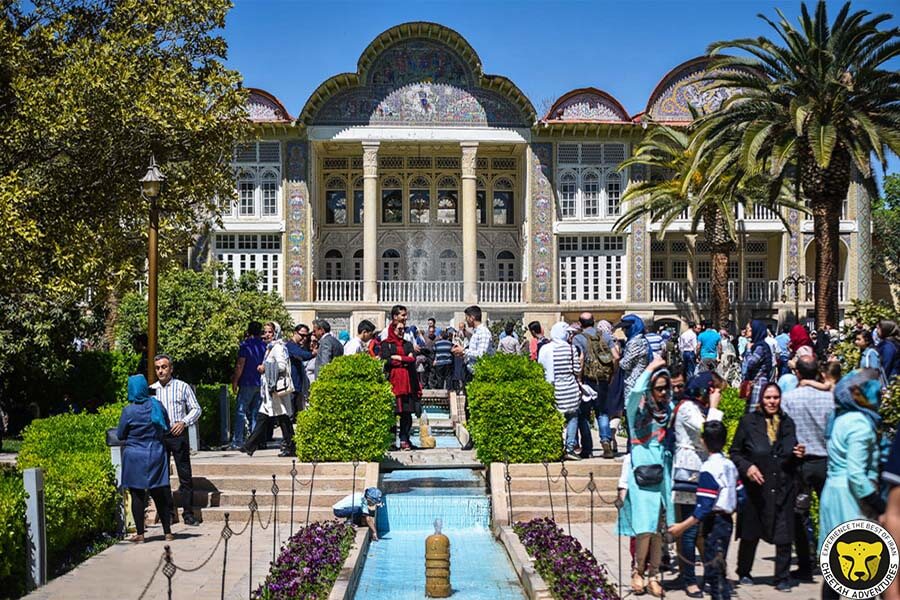
Eram Garden, Shiraz
-
Yazd
In the year 1396, Yazd was added to UNESCO’s World Heritage Sites as the second historical city of the world. Let us also note that the word Yazd signifies pure, holy, and the land of god. (Read more about Yazd here)
-
Lorestan
Lorestan is full of vast plains, magnificent waterfalls, and appeasing jungles. Furthermore, historical tourist sites such as the Falak-ol Aflak castle add to the city’s magnetism and charm.
-
Mashhad
Mashhad is a busy town, full of buzzing and commotion. At any time of the year, the airplanes from Tehran to Mashhad and the intercity trains are at full capacity. If you enjoy a vibrant and bustling crowd, Mashhad will be a wonderful place for you to spend Nowruz.
-
Gilan
The climate of Gilan during Eid-e Nowruz is sensational; like heaven on earth. Of course, the rain might intensify and evolve into thunderstorms. Therefore, we recommend that you check the weather report for several days ahead. (Read more about Gilan & Rasht here)
-
Mazandaran
The bewitching nature, green sea, and delightful jungles of Mazandaran are fantastic destinations for the Nowruz holidays.
-
Qeshm and Hormuz
The best time to enjoy the weather of the southern cities of Iran is Nowruz. During the Nowruz holidays, the weather is still not too warm but does not have the bite of cold that is characteristic of its winter. (Read more about Qeshm & Hormoz tours here)
During Eid, there are festivals and events organized on the Island of Kish that can increase the attraction of this travel destination for tourists. (Read more about Bandar Abbas & Kish here)
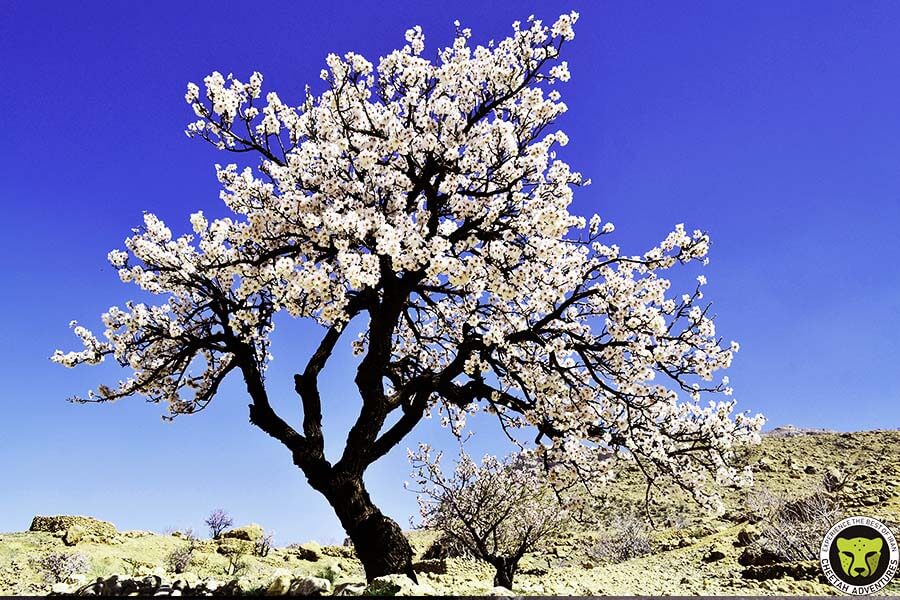
Spring Season in Iran


